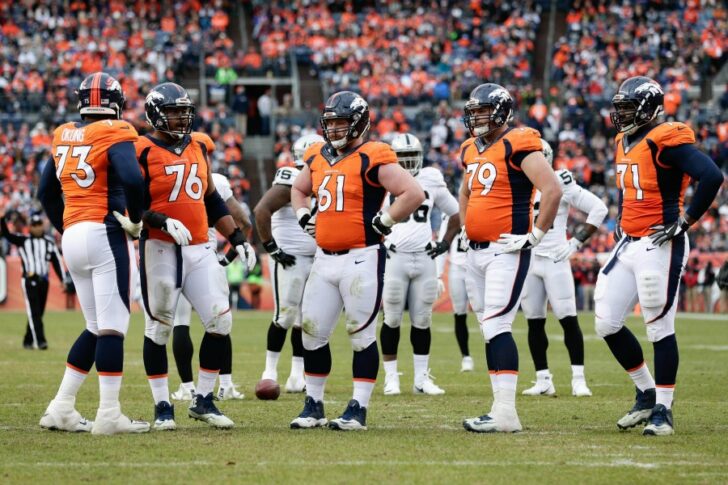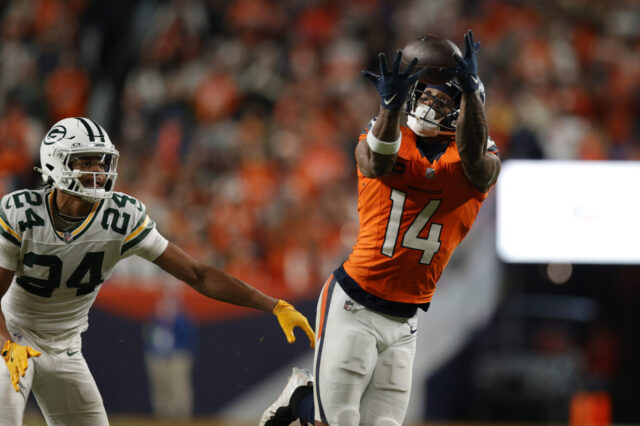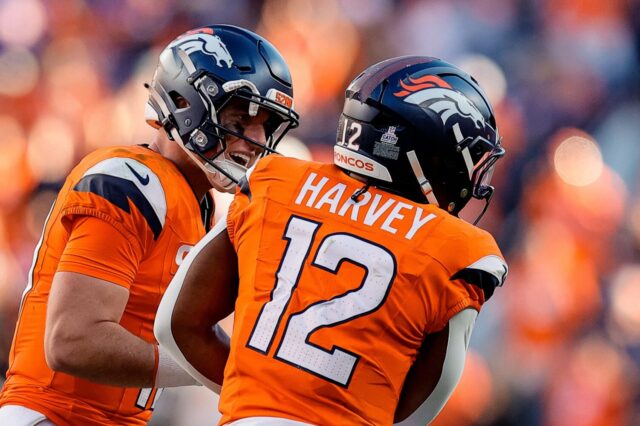During the 2017 offseason, the biggest headlines surrounding the Denver Broncos had been fixing the offensive line and landing Tony Romo.
Radio, news channels, websites and fan blogs were exploding with overwhelming content about how the Broncos were going to land a 37-year old injury prone quarterback and fix an offensive line that lead the way to the Broncos’ poorly ranked offense in 2016 (27th overall).
Talk of the offensive line has continued even as recently as the NFL Draft, where the Broncos selected Utah left tackle Garett Bolles after letting 2016 starter Russell Okung sign with AFC West rival Los Angeles during free agency. Many fans and analysts are still hung up on the Broncos’ offensive line.
Was Bolles the right pick at No. 20 in round one? Do the broncos have a solution at right tackle with Menelik Watson? What will they do with former second round pick Ty Sambrailo? How will Paxton Lynch/Trevor Siemian survive?
The questions I have for everyone are: does it really matter as much as we’re all reading into it? And if it does, haven’t we all talked about it enough?
Currently, the Broncos’ starting offensive line is shaping up to look like this:
Garett Bolles, LT
Ronald Leary, LG
Matt Paradis, C
Max Garcia, RG
Menelik Watson, RT
The offensive line what makes the offense operate smoothly, I understand that. But teams have seen large amounts of success without a stellar offensive line. In fact, I’d argue that the Broncos’ offensive line from their Super Bowl victory was worse than it is now.
To start, those who think Denver is doomed with starting a rookie at left tackle need to remember that the Broncos have gotten the job done with far worse in the past.
After losing stalwart left tackle Ryan Clady for the 2013 season, the Broncos made it all the way to the Super Bowl with Chris Clark, a converted right tackle, protecting Peyton Manning‘s blindside.
By no means was Chris Clark a bad player. But the downgrade from Clady, who at the time was a top-10 tackle in the league, to Clark was massive.
Again, Clady’s injuries flared up as he tore his ACL during the 2015 offseason and was lost for the year.
To replace him, the Broncos turned to second round rookie Ty Sambrailo, who was also injured during the regular season and placed on season-ending injured reserve.
When Sambrailo went down with injury, the Broncos signed veteran journeyman Ryan Harris. Harris had been bouncing around the league as a right tackle for the Broncos, Texans and Chiefs before being re-signed by the Broncos to be their starting left tackle.
Again, with Harris as the blind side protector, the Broncos found themselves back in the Super Bowl.
This time, led by a stout defense, they were victorious.
The lack of a premier left tackle, or any other position along the offensive line did not matter one bit, as the Broncos still prevailed on the game’s biggest stage.
Bottom line: there are ways to win a football game without having an offensive line like that of the Dallas Cowboys (who possess three Pro Bowl linemen).
Looking forward to this season, there’s little to no question that starting a rookie first round pick who plays with a nastiness on the level of Derek Wolfe puts the Broncos in a better position than when they dubbed either Clark, Sambrailo or Harris.
Looking at the rest of the offensive line, the Broncos are already in much better shape than they were this time last year.
Leary and Watson are immediate upgrades at the guard and tackle positions, particularly the latter. Many will argue that Watson wasn’t that great while on the Oakland Raiders, but many fail to remember how ineffective the combination of Sambrailo/Donald Stephenson was at right tackle last year. Watson is most certainly an upgrade.
Paradis will continue his high level of play at the center position once he returns from injury.
At right guard, the Broncos have the option to let the trio of Sambrailo, Michael Schofield and Garcia battle for playing time, though many believe it’s Garcia’s job to lose.
There is still work to do on the offensive side of the ball, particularly on the offensive line. But, the Denver Broncos were a 9-7 team last year for a multitude of reasons, not just poor play along the offensive line.
We won’t know for certain until training camp and preseason games just how much better off the Broncos are on the offensive line. But with OTAs well under way, it’s time to shift focus to other parts of the team.
There should be much more discussed when looking at the 2017 Denver Broncos such as: improving the run defense, the quarterback competition, John Elway‘s contact situation, the naming of Mile High Stadium and how the new coaching staff will fare in its first season under new head coach Vance Joseph.
The Broncos have improved their offensive line in the best way they could have given the parameters of the 2017 offseason.
Yes, offensive line was a mess in 2016, but the play of five to eight players does not reflect the entire record of a 53-man roster. Besides, that page has been turned.



